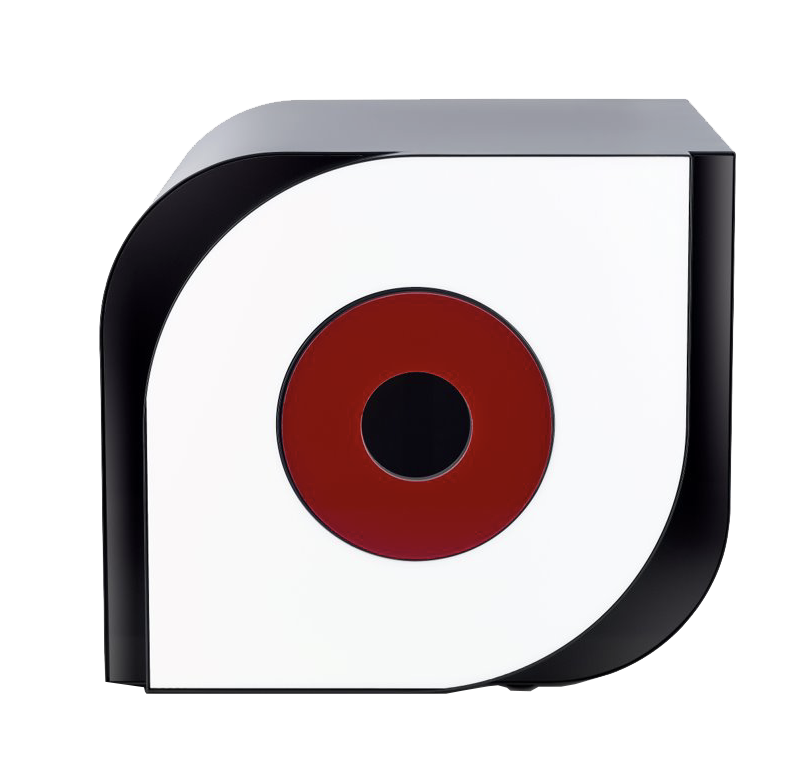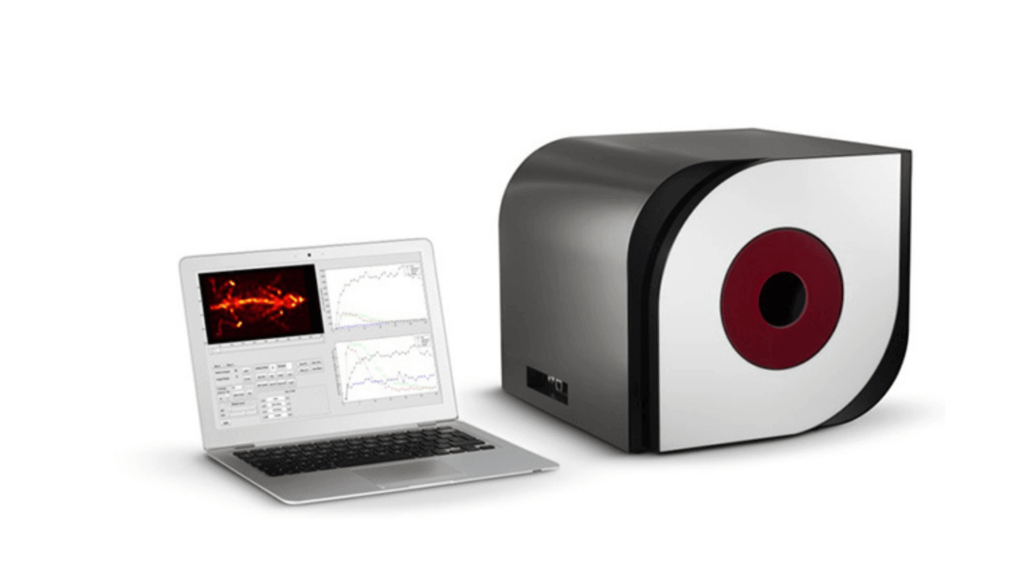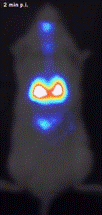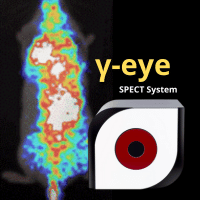System Used:
γ-eye SPECT

Bioemtech’s γ-eye SPECT systems have emerged as a promising alternative to conventional 3D SPECT systems in preclinical research. While 3D SPECT systems have long been used for molecular imaging in small animal models, Bioemtech’s γ-eye systems offer unique advantages and capabilities that make them attractive for specific applications. This article explores the features, imaging capabilities, applications, and potential impact on advancing scientific understanding.
If we take a step back and look at 2D vs 3D imaging from the perspective of optical imaging – either bioluminescence or fluorescence, then this comparison becomes a bit more familiar to the imaging world. With bioluminescence, for example, both 2D and 3D imaging is possible – often even within the same system. However, the majority of times, scientists will opt for higher throughput 2D imaging. It takes less time and provides sufficient data to answer the biological questions being asked. Now imagine, if that data became even more quantifiable, and any issues of depth of penetration were removed – how? by using a radiotracer rather than an optical tracer – by using SPECT imaging.
Preclinical SPECT imaging plays a vital role in various fields, including drug development, disease modeling, and molecular imaging studies in small animal models. Conventional 3D SPECT systems have been widely used due to their ability to provide high-resolution 3D images. However, Bioemtech’s γ-eye systems offer unique advantages that make them a compelling choice for certain preclinical applications.
Bioemtech’s SPECT systems offer competitive imaging capabilities compared to conventional 3D SPECT systems. While 3D systems excel in providing high spatial resolution, Gamma Eye SPECT systems compensate with enhanced sensitivity and improved temporal resolution. These attributes make the γ-eye well-suited for dynamic imaging studies, where capturing rapid physiological processes and temporal changes in radiotracer distribution is crucial. Additionally, the higher sensitivity of γ-eye systems allows for the detection of lower radiotracer concentrations, enabling studies involving low-dose tracers or targets with limited expression.





In addition to increased sensitivity, the γ-eye systems are also more cost effective than conbentional SPECT systems, making them accessible to a broader range of research institutions and regions of the world with limited budgets. The compact design and portability of Gamma Eye SPECT systems make them suitable for on-site imaging, enabling imaging in various laboratory settings, including in vivo studies and real-time monitoring. Finally, the systems’ rapid acquisition times contribute to increased workflow efficiency and reduced anesthesia exposure for small animals, optimizing experimental protocols and enhancing animal welfare.
Bioemtech’s γ-eye SPECT systems offer distinct advantages over conventional 3D SPECT systems in preclinical research. Their higher sensitivity, portability, and rapid acquisition times make them valuable tools for dynamic imaging studies and applications that require precise localization of radiotracers and evaluation of fast physiological processes. Researchers should carefully consider their specific imaging needs and trade-offs between spatial resolution and sensitivity when selecting the most suitable system for their preclinical imaging studies. By leveraging the advantages of Bioemtech’s γ-eye systems, researchers can enhance their understanding of disease mechanisms, improve drug development processes, and advance scientific knowledge in various fields.
